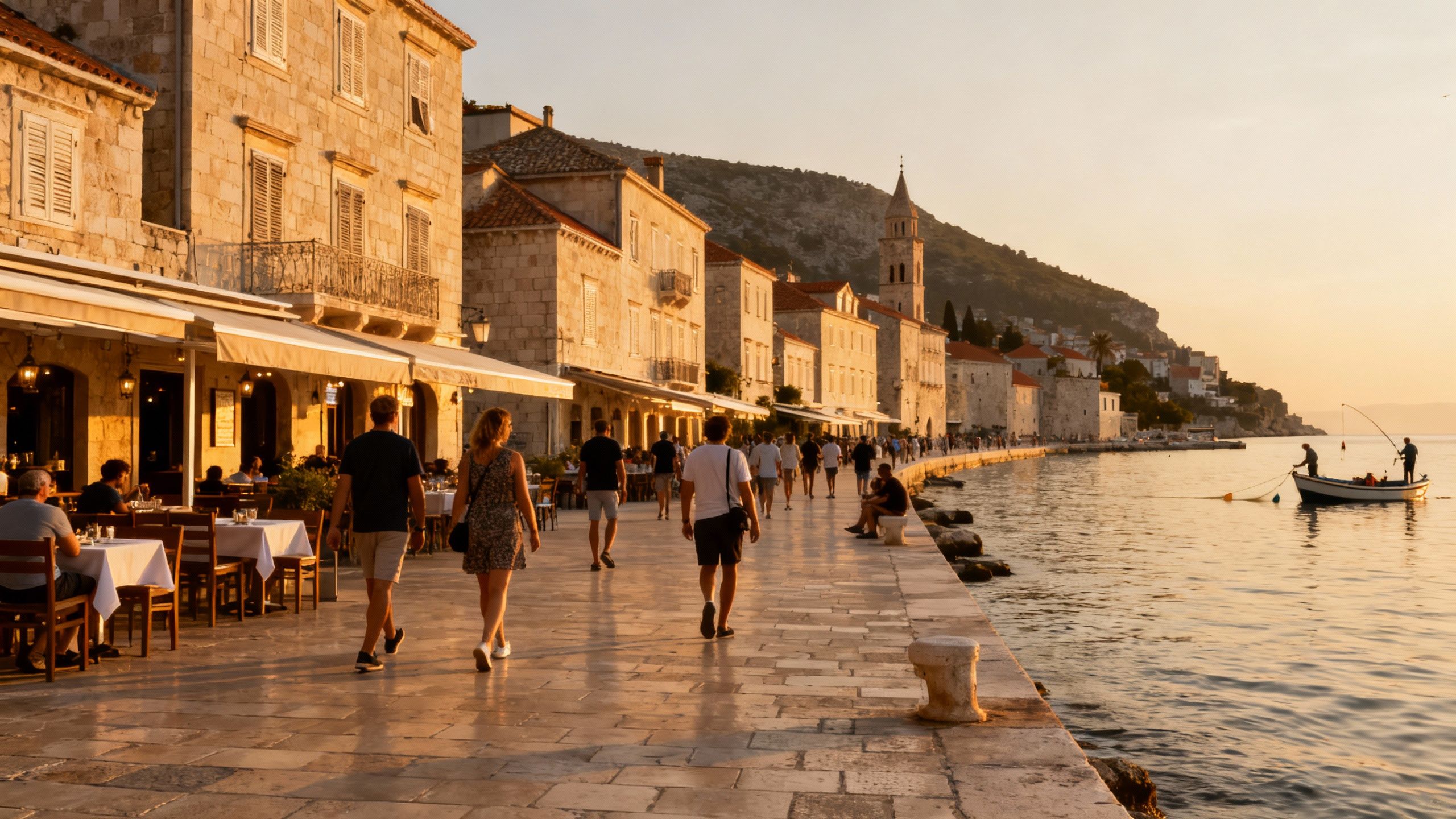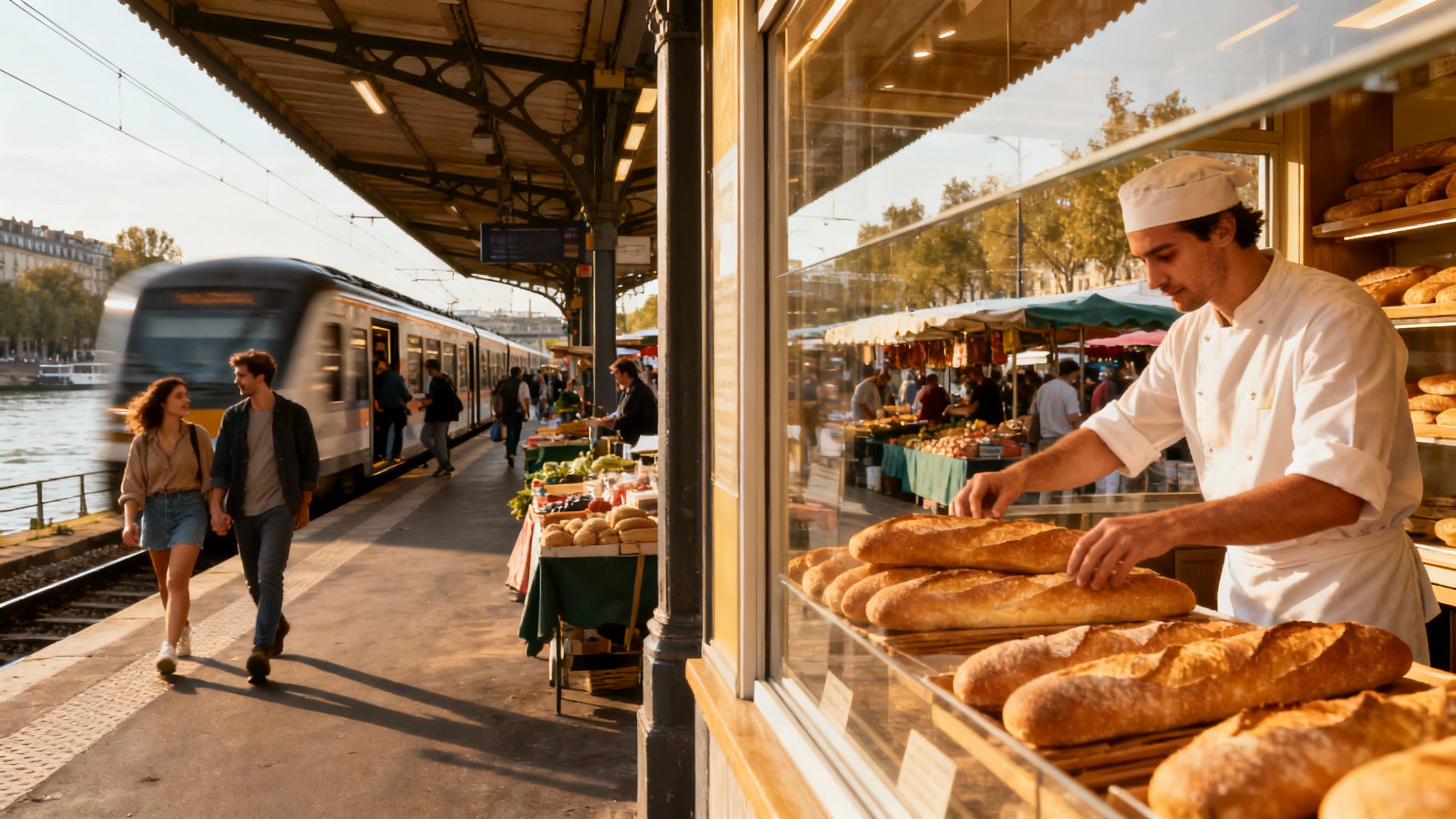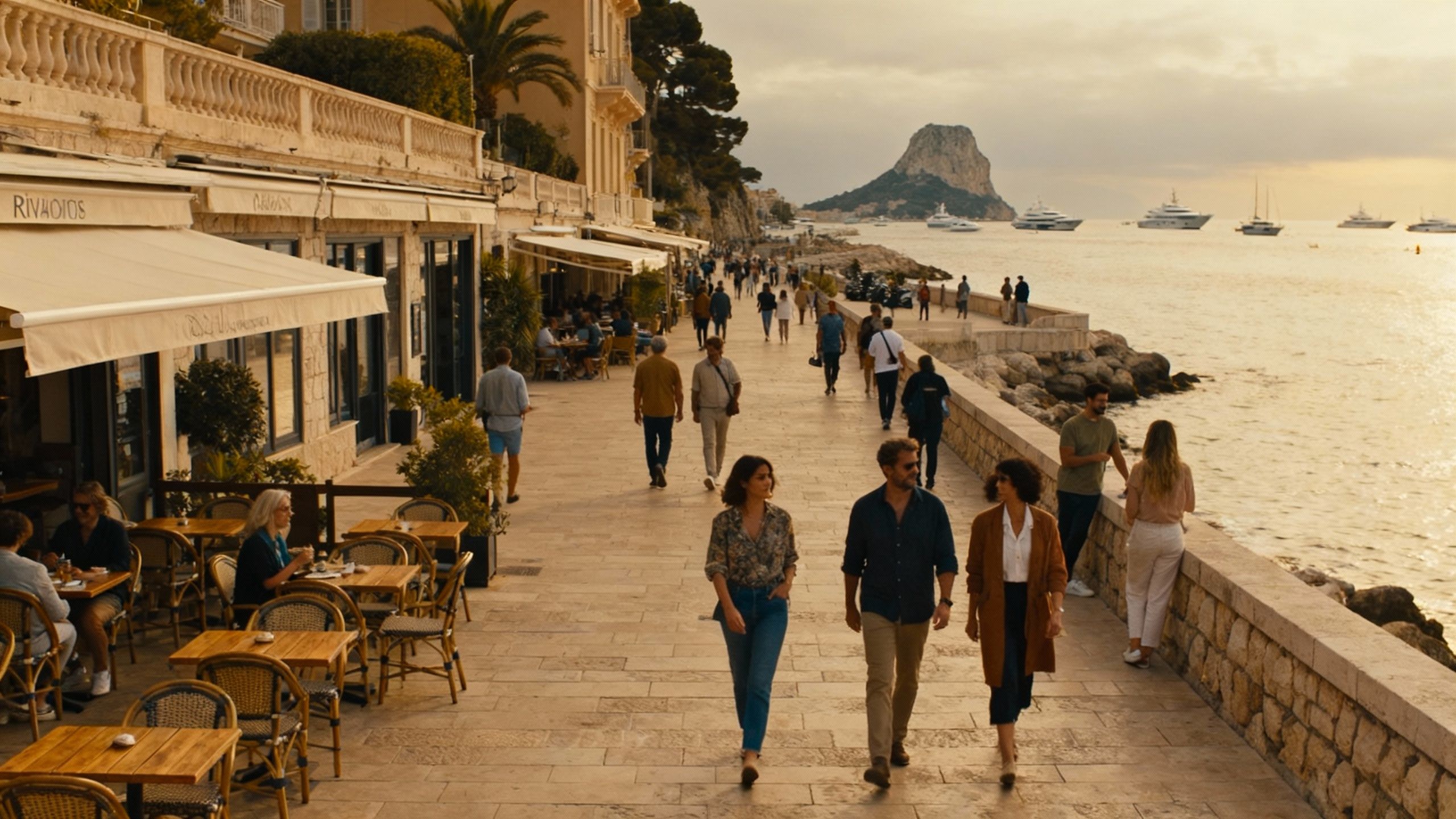Why Off‑Season Riviera Often Beats Summer Hype
The Côte d'Azur's off‑season reveals quieter neighbourhoods, negotiation leverage and lifestyle-tested homes — national data show stabilization in early 2025.
Imagine walking the Promenade des Anglais in January — the sea grey, cafés quieter, restaurants full of locals rather than holiday crowds. That off‑season atmosphere is where the Riviera shows a different face: calmer markets, clearer negotiations and real neighbourhood life. For international buyers who want more than a postcard, buying outside summer reveals lifestyle and value together.
Living the French Riviera off‑season
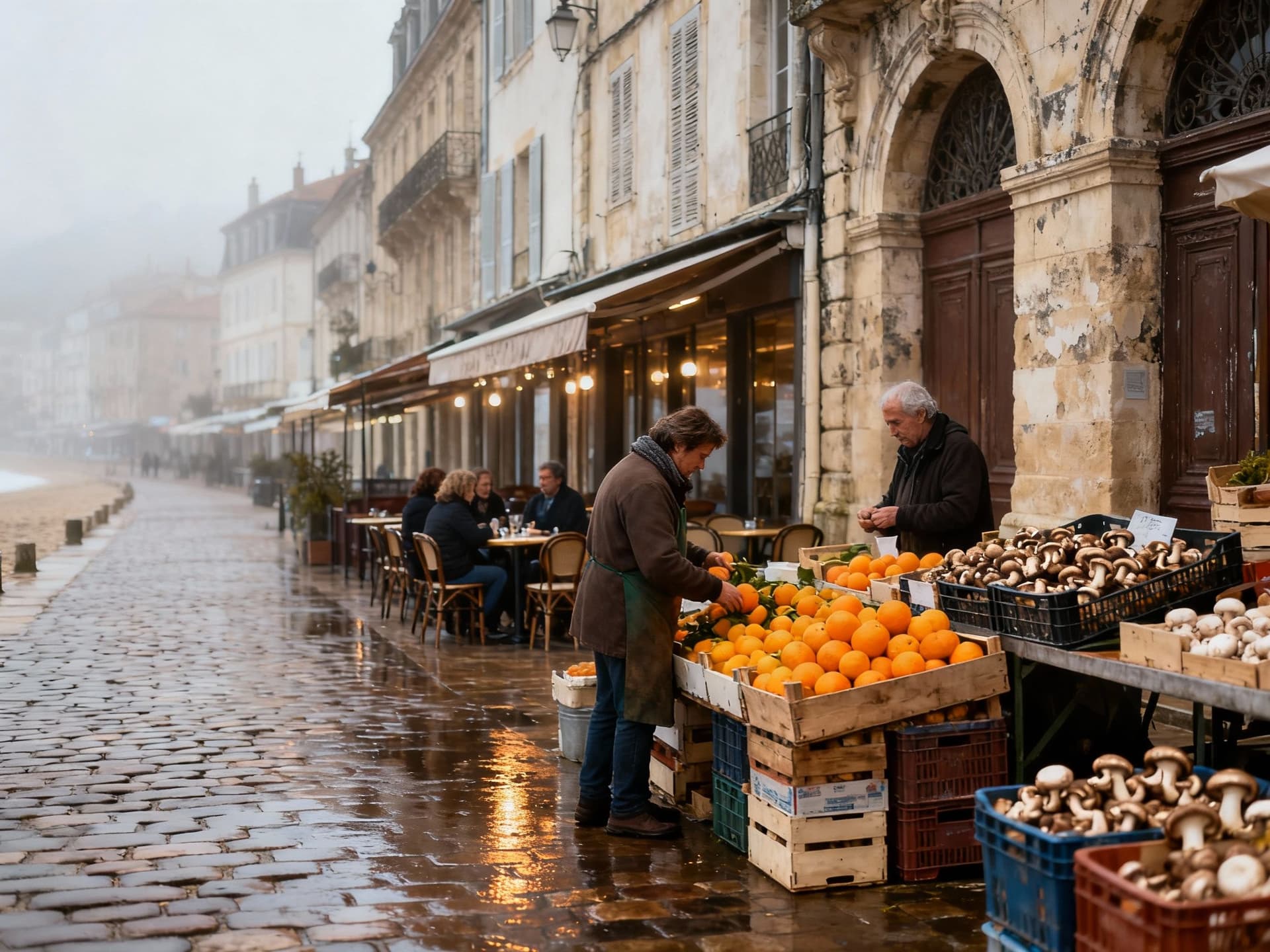
Daily life on the Côte d'Azur in shoulder months feels domestic rather than theatrical. Markets such as Marché Provençal in Antibes or Cours Saleya in Nice are full of stallholders packing seasonal produce. Streets that teem with tourists in July — Rue Meynadier in Cannes, Boulevard de la Croisette's quieter side alleys — become places to meet neighbours, walk dogs and test restaurants before they make the tourist press. These rhythms matter because they change what you value in a home: storage for market purchases, north‑facing terraces for cooler months, better insulation than an eternal sun terrace.
Neighbourhood spotlight: Vieux Nice and its quieter winter self
Vieux Nice in summer is a blur of gelato lines and souvenir stalls; in November it is a neighbourhood where bakers still queue and local clubs hold pétanque tournaments. Properties here are often older, with high ceilings and small courtyards; they gain lifestyle value when you shop daily, dine with the same restaurateurs and use the city as a base rather than a backdrop. For buyers, that means checking heating systems, window quality, and legal access to communal courtyards — items tourists seldom notice but locals live with year‑round.
Food, markets and the year‑round kitchen life
A morning in the market shapes weekly life: truffles and cèpes in autumn, citrus in winter, fresh basil and tomatoes from late spring. Chefs and neighbours shop seasonally; buying a property near Marché Forville in Cannes or Place Masséna in Nice means you're not just investing in scenery but in a daily ritual. When you factor this into property choice, look for kitchens with usable worktops, practical pantry space and ventilation — not just a glamorous island that shows well in photos.
- Lifestyle highlights (off‑season): 1) Morning markets at Marché Provençal (Antibes), 2) Quiet winter swims at Plage de la Gravette (Antibes), 3) Weeknight concerts at Villa Ephrussi (Saint‑Jean‑Cap‑Ferrat), 4) Local wine bars on Rue d'Antibes, 5) Coastal walks on Cap d'Antibes headland
Making the move: practical considerations that follow the lifestyle
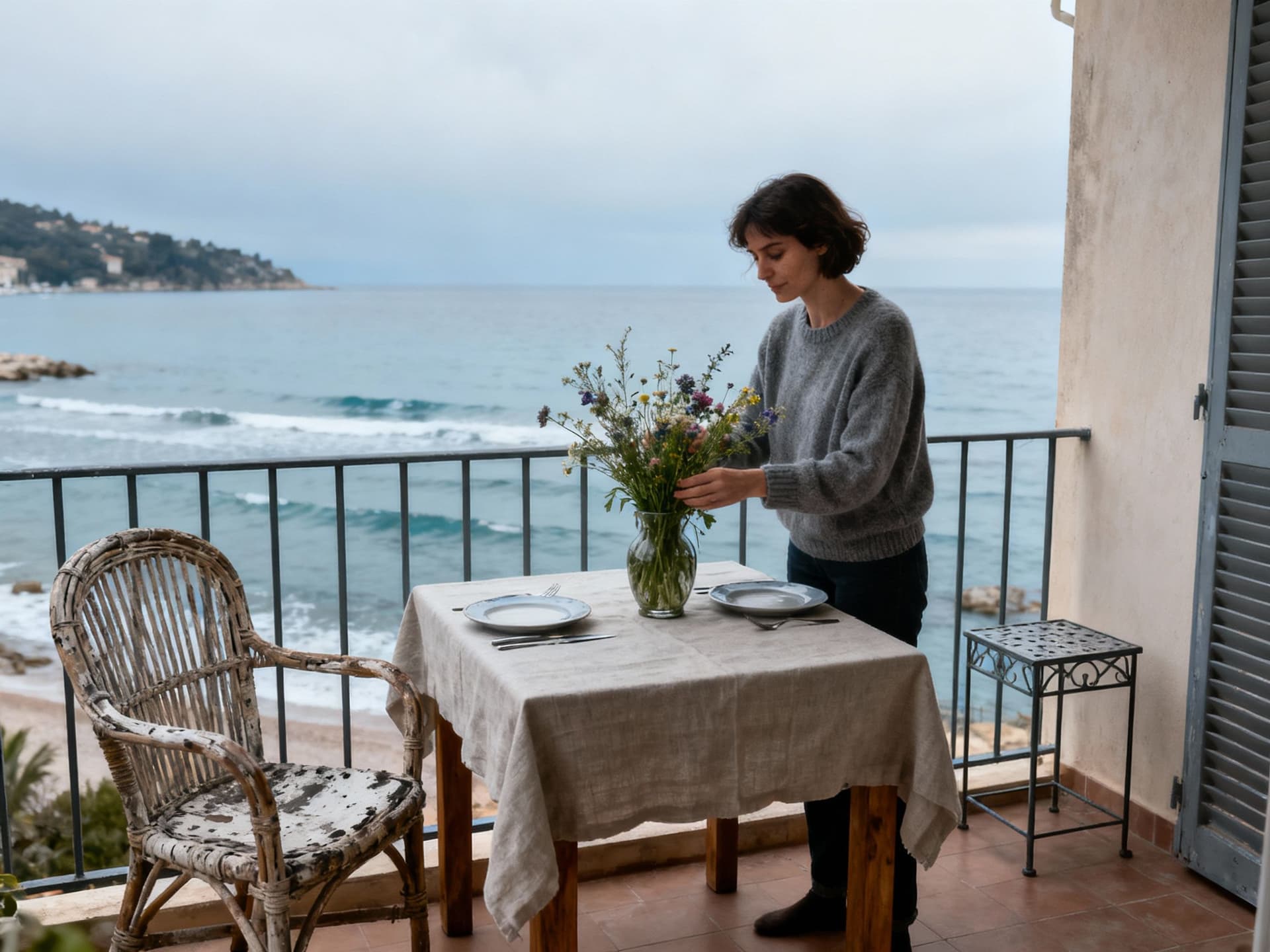
The lifestyle advantage of buying off‑season has a market counterpart. National data show prices stabilising and beginning to rise modestly in early 2025 after quarters of adjustment. That pause creates pockets of opportunity on the coast where sellers who rely on summer showings face fewer competing bids. But stability is not uniform: local micro‑markets — historic cores versus seafront developments — behave differently, so local transaction data matter more than national headlines.
Property styles and how they match your life
Stone townhouses in Villefranche or old apartments in Vieux Nice support a daily urban life: narrow streets, morning markets and small terraces. Modern villas on Cap d'Antibes or Mougins favour indoor‑outdoor living and privacy. When buying, prioritise the use case: do you want a full‑time kitchen that supports market cooking, or a low‑maintenance sea‑view apartment used seasonally? That prioritisation should guide inspection checklists, not marketing copy.
Work with agencies who know the off‑season market
- 1) Ask agencies for transaction records by month, not just annual averages — winter deals tell a different story. 2) Request referred contacts for local contractors and seasonal managers who operate when the summer workforce leaves. 3) Require proof of consistent heating and insulation records for older buildings. 4) Demand recent utility bills and syndic minutes for apartments to spot winter costs. 5) Compare offers across neighbouring towns — sometimes value migrates inland rather than along the coast.
Insider knowledge: what expats wish they'd known
Expats often learn the hard way that a sea view is not the same as year‑round comfort. I’ve seen buyers arrive in summer, fall in love, and only later discover thin windows, expensive communal heating or limited year‑round services. The smartest purchases come from spending time there in quiet months, talking to neighbours and testing what daily life is actually like in January and February.
Cultural integration, language and community
French coastal towns are social in measured ways: shopkeepers remember faces, clubs rotate members by season and municipal services run on local rhythms. Learning a few phrases, attending a weekly market and joining a neighbourhood association are fast routes to belonging. These social cues change property priorities — proximity to the market or mairie can be more valuable than an extra bedroom.
Long‑term lifestyle: how your life will evolve
Think five‑year lifestyle arcs: will you host friends every summer, shift to full‑time residency, or rent seasonally? Coastal infrastructure investments and shifting tourism patterns will alter demand. Buying in the off‑season often produces more resilient choices: properties chosen for year‑round comfort tend to retain steady demand from families and older buyers when markets reheat.
- Red flags to watch in coastal listings: 1) No winter photos or utilities data, 2) Heating described as "occasional" or "only for winter guests", 3) Syndic accounts missing for the last two winters, 4) High seasonal service fees unexamined, 5) Promises of future infrastructure without permits
A final practical note: national data from INSEE and notaries show the French market stabilising and, in early 2025, modestly rising again. That macro context reduces downside risk, but the real advantage for international buyers is tactical: see the Riviera out of season, test daily life, and negotiate from local knowledge. If you want a property that rewards living — not just looks great in July photos — the off‑season is when the Riviera reveals its truest value.
British expat who relocated to Marbella in 2012. Specializes in rigorous due diligence and cross-border investment strategies for UK and international buyers.
